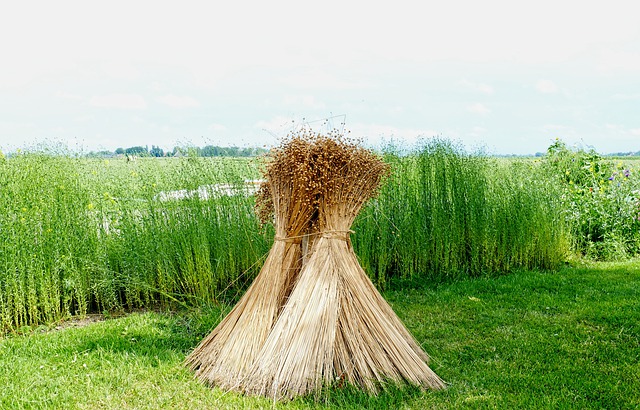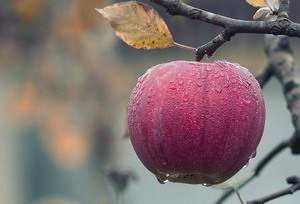
As most of you know by now, I am a big fan of the ketogenic lifestyle. In simple terms that means you burn fat for energy in your cells instead of sugar/carbs. The ability to burn both fat and sugar is a way mother nature made us adaptable to living with seasons. In a natural environment, sugar and carbs are only available to gather for consumption in the late summer and autumn. This begins as berries ripen, then other fruits, then grains, starchy vegetables, and root vegetables. By the time the winter solstice rolls around, all the foods that contain significant sugars and starches (carbs) have all been gathered and eaten by hunter-gatherer cultures. Winter and spring were a time for hunting and eating wild game, fish, and green herbs/plants.

I am talking about how our ancestors lived for hundreds of thousands of years – before they settled down and developed agriculture. First, instead of migrating around the following food game, they started domesticating animals – pigs, goats, and sheep. This began around 13,000 years ago. It was another 1500 – 2000 years before they started planting crops to harvest and store food for the winter. So for most of human history, we had to have a metabolism that would adapt to different energy sources – sugar/starch for summer and autumn, and fats for energy in winter and spring times. An interesting side note, as hunters trying to survive, the muscles of the animal were the least favored part, because lean muscle provides little energy to the body. Ancient hunters loved the entrails, brains, bone marrow, and any other fatty parts. That is where the energy is.

Back to the agriculture story. One of the first plants to be grown as a crop was flax along with hemp. This was because both of these plants provided usable fibers for making rope and cloth. The first flax rope discovered has been dated to 30,000 BC, long long before any agriculture. So flax has been a useful plant to humans for ages. In fact, the Latin name for flax, Linum usitatissimum, translates to “linen most useful.”
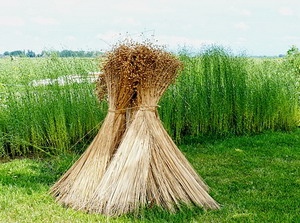
Why is flax so useful? The flax seeds are ground into flour and used to make baked goods. The seeds are also pressed to produce linseed oil, a high omega 3 oil, that is not only used as a health food but when boiled the oil is used to treat wood in paints and varnishes. The leftover meal after oil removal is used as fodder for animals. The stems of the plant, which grow to 3 to 4 feet in height, provide long fibers that are much stronger than cotton and are used to make linen cloth for everything from fine clothing, bedsheets, and sails to canvas, rope, banknotes, and tea bags. Flax linen was the plant-sourced fabric of choice until the cheaper cotton overtook the market in the early 1900s. Cotton was more adaptable to machine farming and harvesting and thus was much cheaper to produce. Cotton and synthetics have almost entirely eliminated the market for flax.

I first learned about flax when I was learning about life in the middle ages due to an interest in the stories about armored knights and adventures when I was in junior high. Back in those days, flax was all the rage. In fact, in the eighth century, King Charlemagne (whom my grandmother says I am descended from) believed so strongly in the health benefits of flaxseed that he created laws requiring all his people to consume it every day. (At least that is the story running around.) It was considered the king of crops because it was so useful.
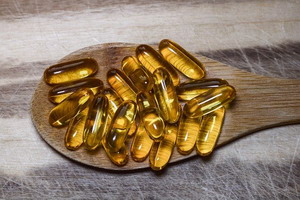
What are its health benefits? I love it as a keto food. I can make crackers and bread and porridge out of it without any (that’s right – zero) digestible carbs. It is all fiber, fat, and protein – the perfect keto food. The fat is an anti-inflammatory omega 3 oil like fish oil called ALA – alpha-linolenic acid. In fact, a small percentage of the ALA is converted into the essential fatty acids DHA and EPA in the body, particularly in women. But the ALA itself has been found to have serious health benefits in the form of improved immune function, decreased heart disease, cancer prevention (breast and prostate), and male infertility. The fiber in flax is great for keeping the bowels moving, and flax contains lignans, a powerful antioxidant for fighting aging and environmental toxins. So flax is really healthy for you.

I have been renewing my interest in flax lately as part of my focus on fast mimicking diets. Fasting is such a powerful health intervention, but people are afraid of simply not eating. I see flax as a viable tool for inducing a ketogenic diet as it has no carbs. And in small quantities, it could be used during fast mimicking. Its only limitation is the protein content, as this would block autophagy if too much is consumed. The miracle of fasting is all about autophagy; when the body eats up its own old dysfunctional tissues and revs up stem cell production for replacing these tissues. I keep experimenting with different fast mimicking protocols to see what works the best with the least challenge to the patient. Hopefully, someday I will be able to make this amazing healing process readily available to everyone.
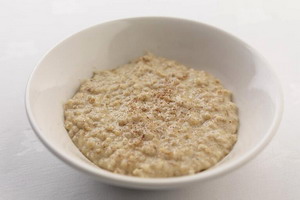
Toward that end I have been having flax porridge each morning, playing with the recipe a little bit each time. It is similar to oatmeal or a wheat meal hot cereal when made, but without any of the drawbacks. Here is my current recipe:
1 cup cold milled organic flaxseed
1 cup purified water
1 cup coconut milk
a pinch of salt
a dash of stevia or Monk fruit
Add the flax and water into a saucepan and mix well. Add in the rest of the ingredients and heat over medium heat until it just starts to bubble. Cool and eat.
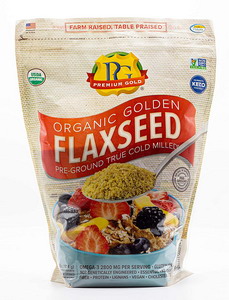
I have tried many types of flax because often flax will have a trace of bitterness or a fishy rancid smell or taste because of the omega 3 oil in it. Keeping whole seeds in the freezer and grinding it just before using them is the best way to avoid this traditionally. But a while back I came across a special cold milled golden flaxseed that has solved this problem for me. The taste does not have any of the off-flavor issues I have had in the past. Years ago I actually got it at Costco, but now I have to order it online. Here is the type I like.
For flax crackers, I have an equally easy recipe, which I have monkeyed with to make it tastier. I add in chicken bouillon and fish sauce to boost the taste.
¾ cup water with
1 Tbs of bouillon and
1 Tbs. fish sauce dissolved into it
2 cups of cold-milled flaxseed
1 tsp onion powder or garlic powder

Mix this well in a bowl until it forms a workable dough. A bit of extra water may be needed to achieve the desired consistency. Layout a sheet of parchment paper on a flat surface put the dough on it, and cover with a sheet of plastic wrap. Use a rolling pin to roll out the dough until it is very thin – 1/8 inch max. Make sure the final flat dough piece will fit onto your baking pan. Remove the plastic wrap and slide the parchment paper onto your baking tray. Use a pizza cutter to precut the crackers before baking. Bake at 400 degrees for about 20 minutes. Watch to be sure it does not burn. Cool on wire racks.

These are two ways I am incorporating flax into my diet at this time. I recommend trying one or both of these recipes for your health. The porridge is almost instant, and yes it can be done in the microwave for even less effort. We really want to build up our health and immune systems in this day and age. Here is a simple way to help to do that.
Take care,
David
